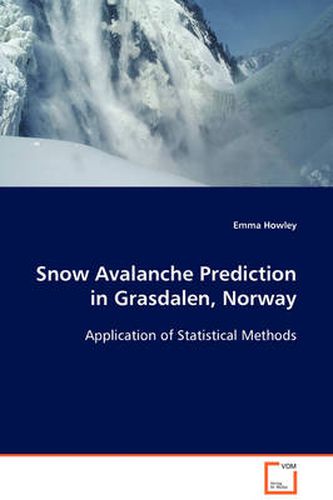Readings Newsletter
Become a Readings Member to make your shopping experience even easier.
Sign in or sign up for free!
You’re not far away from qualifying for FREE standard shipping within Australia
You’ve qualified for FREE standard shipping within Australia
The cart is loading…






This title is printed to order. This book may have been self-published. If so, we cannot guarantee the quality of the content. In the main most books will have gone through the editing process however some may not. We therefore suggest that you be aware of this before ordering this book. If in doubt check either the author or publisher’s details as we are unable to accept any returns unless they are faulty. Please contact us if you have any questions.
Snow avalanches are a common hazard in many mountainous environ ments. As such, it is often necessary to be able to predict these events. In this study detailed analysis of weather parameters in western Norway has established common triggering factors for avalanches in Grasdalen. Two large sets of weather data have been used. A number of wind drift factors have been derived, as several authors consider these to be important. Statistical procedures were applied, including cumulative probability plots and classification trees. The latter highlighted the most important weather parameters used to classify data in terms of dry avalanche days or non avalanche days. Results of these indicate important splitting factors to be various sums of precipitation and the maximum temperature. The combined wind drift factors were con sidered less important. These results are not in total agreement with previous authors, however, this study serves as a critical appraisal of current statistical methods of avalanche prediction and would be useful for avalanche forecasters and researchers.
$9.00 standard shipping within Australia
FREE standard shipping within Australia for orders over $100.00
Express & International shipping calculated at checkout
This title is printed to order. This book may have been self-published. If so, we cannot guarantee the quality of the content. In the main most books will have gone through the editing process however some may not. We therefore suggest that you be aware of this before ordering this book. If in doubt check either the author or publisher’s details as we are unable to accept any returns unless they are faulty. Please contact us if you have any questions.
Snow avalanches are a common hazard in many mountainous environ ments. As such, it is often necessary to be able to predict these events. In this study detailed analysis of weather parameters in western Norway has established common triggering factors for avalanches in Grasdalen. Two large sets of weather data have been used. A number of wind drift factors have been derived, as several authors consider these to be important. Statistical procedures were applied, including cumulative probability plots and classification trees. The latter highlighted the most important weather parameters used to classify data in terms of dry avalanche days or non avalanche days. Results of these indicate important splitting factors to be various sums of precipitation and the maximum temperature. The combined wind drift factors were con sidered less important. These results are not in total agreement with previous authors, however, this study serves as a critical appraisal of current statistical methods of avalanche prediction and would be useful for avalanche forecasters and researchers.